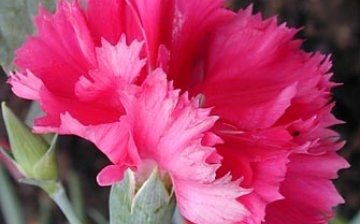Carnation. Care
Carnations are divided into two conditional groups: one-color and two-color. She is not a very demanding plant, which means that caring for her is not difficult. In addition, it is a fairly cold-resistant, perennial plant that does not need to be dug out every year in the fall and planted back in the spring.
There are 300 types of carnations, but, unfortunately, only a few of them are suitable for growing at home. These carnation carnations are very similar, but there are still some nuances to be aware of when growing them.
For example, the Grenadine carnation is very light-loving, but not picky about temperature changes. It tolerates cold and drought well. It is better to plant it in drained soil, fertilized several years before planting, fertile. It does not tolerate high humidity, as it suffers from fungal diseases in stagnant water.
Turkish carnation, caring for it is something different. It is less demanding for a lot of lighting, it can even feel great in partial shade. It is also frost-resistant, but not drought-resistant. The plant needs periodic watering, but also cannot withstand damp soil and climate. She is a biennial plant. That is, on the third day of flowering, it loses its decorative qualities.
Planting with all types of carnations is tolerated normally, one might say - easily. They can be grown in apartments, on the balcony, propagating by seeds, making layers, or cuttings.
In the spring, it is advisable to cover the plant from the first rays of the sun until the carnation begins to grow. Fertilize and loosen the soil. It is desirable to feed 3-4 times during the season.
During watering, do not allow water to get on the buds and flowers, as this can ruin the flower.




I love carnations very much, it is a pity that these flowers were made flowers of sorrow, mainly at funerals and on May 9 they can be found in abundance, but they are pleasant to me on any other holiday.